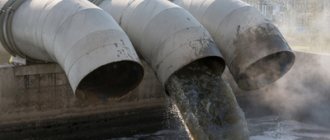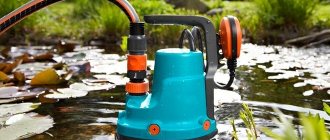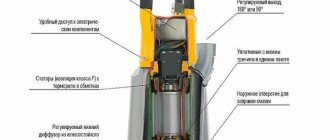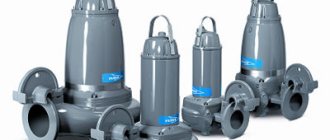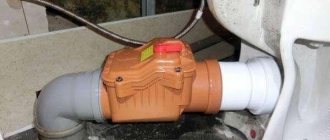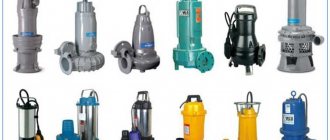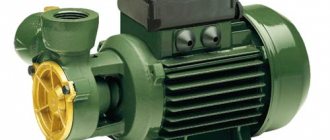General operating principle
The best mobile application for experienced players has appeared and you can have a phone with all the latest updates and discover sports betting in a new way.
The operating principle of vacuum pumps involves manipulation of the pressure and volume of the working chamber. As these characteristics change, the pressure in the pump decreases. As a result, the space is filled with a partial or complete vacuum.
Important! Molecules, whether gaseous or liquid, are invariably directed towards areas of low pressure. This is the main factor that guarantees the normal operation of the vacuum device. The pressure is reduced when gas is drawn from a confined space at set time intervals.
The operation of the majority of vacuum pumps depends on the displacement principle. The volume of vacuum obtained in this way directly depends on the level of tightness of the working space. It is ensured by the working elements of the pump itself (wheels, spools, plates).
Sometimes a vacuum unit is capable of sampling a gaseous medium, but its efforts are not enough to lower the pressure to the required level. Then a forevacuum mechanism is used. It guarantees the achievement of the desired indicators. In this case, the operating scheme is the same as with a series connection of pumps. If the vacuum mechanism can lower the pressure, but is not able to set the required intake speed, you need to connect another unit. Take a parallel connection diagram as an example.
Design and operating features of a vacuum brake booster
If you ask an elderly person who has ever driven a Soviet car what it was like to brake at high speed, he will definitely answer: it was hard. I had to press the brake pedal to the floor, often even stand up, transferring all my weight to one leg. The invention and rapid introduction of brake boosters solved this problem.
What's the problem, you ask? The fact is that braking, which strongly depends on the physical condition of the driver, cannot always be effective. And a car with such an imperfect brake will certainly lose to its current brother in terms of ride comfort.
Let's look at the design of the most common brake booster and look at what malfunctions it has.
Briefly about the essence
The braking system of modern cars is mostly hydraulic. The features of her work were described in a separate article by Avto.pro. Almost no attention was paid to the so-called brake booster, which means we will look at its features here.
Replacement features
The vacuum device is replaced based on the following principles:
- The replacement mechanism or their combination must have performance with indicators corresponding to the characteristics of the replaced unit under equivalent suction conditions.
- The replacement mechanism or combination must ensure that the required volume of vacuum is provided.
A number of additional requirements are often put forward for replacing a device, among which a special place is occupied by:
Design and principle of operation of a plunger pump
- Resistance of materials to aggressive environments;
- There is no risk of mixing an unfavorable environment with gas or liquid.
Vacuum water ring pumps work best in tandem with hydraulic ones. They are used as auxiliary equipment to ensure the operation of large centrifugal pumps. With their help, a “self-priming mode” is established at pumping stations. Cost savings are achieved due to the relatively small depth of the mechanisms. When startup time is not critical, use a unit that is slower than the device being replaced.
Important! A serial liquid ring pump, used according to the standard design, is completely unsuitable for pumping out toxic gas, since the latter can combine with ballast liquid.
Classification of pumps by pressure range
Vacuum pumps are classified according to their operating pressure range into:
- primary (forevacuum) pumps,
- booster pumps
- secondary pumps.
In each pressure range, different types of vacuum pumps are used, differing in design. Each of these types has its own advantage in one of the following areas: possible pressure range, performance, price and frequency and ease of maintenance.
Regardless of the design of vacuum pumps, the basic operating principle is the same. The vacuum pump removes molecules of air and other gases from the vacuum chamber (or from the outlet of a higher pressure vacuum pump, if connected in series).
As the pressure in the chamber decreases, subsequent removal of additional molecules becomes exponentially more difficult. Therefore, industrial vacuum systems must cover a wide range of pressures from 1 torr. In the scientific field, this figure reaches torr or lower.
The following pressure ranges are distinguished:
- Low vacuum: >atmospheric pressure to 1 torr
- Medium vacuum: 1 torr to 10-3 torr
- High vacuum: 10-3 torr to 10-7 torr
- Ultra-high vacuum: 10-7 torr to 10-11 torr
- Extreme high vacuum: < 10-11 torr
Correspondence of vacuum pumps to pressure ranges:
Primary (forevacuum) pumps - low vacuum.
Booster pumps - low vacuum.
Secondary (high vacuum) pumps: High, ultra-high and extreme high vacuum.
How does the water ring mechanism work?
Liquid ring pumps are among the most popular types of the group. Water is most often used as their working fluid; antifreeze, oil, acids, alkalis and other substances are used much less frequently. Liquid ejection occurs with the assistance of a rotor equipped with blades.
The principle of operation is quite simple, it can be stated in a few paragraphs. The eccentrically located rotor is located in a cylindrical housing partially filled with liquid. The substance moves around the body using blades. As a result, a ring of liquid is formed inside the housing.
Important! The working cavity of this unit is considered to be a crescent-shaped space that appears outside the liquid ring. The impeller blades divide the space into cells.
When a gas is compressed, heat is transferred to the liquid. It needs to be changed periodically due to constant heating. The fluid enters through a hydraulic seal in the shaft area or suction pipe. It is removed along with the gas through the injection windows.
Important! Liquid ring pumps are extremely easy to operate and consist of a small number of elements.
Principle of operation
The operating principle of such installations is based on the property of a liquid to quickly replace the existing vacuum. It is due to this that pressure builds up in the system, and the pump can lift water even from deep artesian wells, being responsible for the water supply of several residential buildings at once.
In each specific case, depending on the type of vacuum pump, the operating principle of such equipment will vary. The most common today are the simplest mechanical installations, in which there is a reciprocating or rotating main part. Such a rotor is located in an expanding housing, the space with the working blade is instantly filled with liquid, and subsequently the pressure quickly pushes the water through the outlet hole.
The performance indicators of such equipment and its functionality will depend not only on the power of the electric motor, but also on the performance indicators of the vacuum. The main chamber is completely sealed; a special sealing oil is also used, which closes all gaps, providing almost ideal conditions for air injection. You can also find oil-free dry models on sale, the advantage of which is that there is no need for any maintenance or replacement of such hydraulic fluid.
Features of the functioning of a diesel pump
A vacuum pump is needed to create vacuum in diesel engines. The unit is equipped with a rotor that contains a moving spatial blade, which divides the working cavity into two parts.
The rotor is installed eccentrically. When it rotates and the blades simultaneously move, one part of the working cavity increases, while the other decreases. On the suction side, air is drawn from the system, gradually being forced out into a special passage.
Important! It is often used to cool individual engine elements.
Oil is supplied through a special channel from the cylinder head to the engine pump. It lubricates and seals the blades located in the working part. The drive is a crankshaft or camshaft. As you can see, the operating principles of a liquid ring pump and a diesel pump do not have many differences.
Design and principle of operation of a vortex pump
What are Roots Vacuum Pumps?
In cases where in a closed system characterized by significant gas loads it is necessary to create a vacuum of not too great a value, a mechanical Roots vacuum pump, which is a two-rotor type device, can be used. The design of such pumps is based on two rotors, which rotate synchronously in the housing in different directions without contacting each other.
Pumps whose rotors are shaped like a figure eight in cross section operate without the use of a liquid working medium. This eliminates the presence of constantly moving mass in their internal chamber, which improves the dynamic balancing of such devices. That is why, even at high rotor speeds, Roots pumps make virtually no noise or vibrate.
Roots pump diagram
To reduce the backflow of gaseous media pumped out by Roots pumps, sufficiently efficient fore-vacuum pumps are additionally installed at the outlet of such devices. As the latter, such types of vacuum pumps as vane-rotor, rotary-piston and screw-type devices can be used. In addition, a water ring vacuum pump is used as a fore-vacuum pump. An oil trap of sorption or ion type is installed between the foreline pump and the Roots pump to prevent oil from entering the pumped volume. The use of Roots pumps in conjunction with fore-vacuum devices makes it possible to create low and medium vacuum with high pumping speed.
The Roots pump is designed to transport large volumes of gases
Choosing a pump
The design and principle of operation of a vacuum pump directly depends on the tasks assigned to it. Over the past decades, many schemes have been invented and many varieties of similar units have been created, which are now actively used in industry and everyday life. Naturally, household models have weaker characteristics and have relatively small dimensions. Most often they are used for pumping water.
Manipulations with the working chamber allow the device to pump huge amounts of liquid in a minimum time. However, this is not all that vacuum equipment is capable of. Take, for example, containers with a pump, designed for long-term storage of products after sealing.
How does a vacuum pump work for pumping out water?
Water vacuum pumps, which belong to special pumping equipment, can be equally successfully used for pumping water, a gaseous medium, as well as gas mixed with liquid. Such equipment is actively used both in various industries and in everyday life (in particular, autonomous water supply and irrigation systems are equipped with such devices; they are used for pumping water from various reservoirs and transporting it to the point of consumption).
Operating principle of a water vacuum pump
The principle on which a vacuum pump for water works is as follows.
- The water in the working chamber is captured by the impeller blades and also begins to move.
- As a result of the rotation of the wheel blades together with the liquid, a centrifugal force is exerted on the latter, which leads to the repulsion of the liquid towards the walls of the working chamber.
- As a result of the processes described above, a vacuum of air is created in the central part of the working chamber (and in fact a vacuum, since the body of the device is reliably sealed). The gas or liquid pumped out medium is drawn into this area of the working chamber.
The degree of tightness of the working chamber of a vacuum pump for water can be adjusted, which allows you to reduce or increase the pressure of the pumped medium in the pressure line.
Externally, a vacuum water pump is similar to a conventional centrifugal type device
Vacuum pumps for pumping water, as you can see, are not much different in design and principle of operation from centrifugal-type pumping devices. Meanwhile, such devices have a number of significant advantages.
- The structural elements of the equipment have high strength and, accordingly, higher reliability.
- During operation, the device creates a low level of noise and vibration.
- Pumping and supply of water occurs at high speed.
- The substance pumped out by such a device (liquid, gas, liquid mixed with gas) is supplied to a pressure line with a higher productivity.
- Due to exceptionally high-quality sealing, an isothermal environment is formed in the working chamber of such a pump.
Modern vacuum pumps of this type are often equipped with a built-in dirt separator, which prevents solids contained in the pumped medium from entering the internal chamber.
Training “Basics of leak detection and vacuum technology” March 2–4, 2021
St. Petersburg State Electrotechnical University "LETI" named after V.I. Ulyanov and LLC "VAKTRON" invite employees of enterprises to take part in the advanced training course "Fundamentals of leak detection and vacuum technology."
The program is a preparatory course for personnel certification in the field of tightness control according to the requirements of ROSTEKHNADZOR ( SDANK-01-2020, SDANK-02-2020 ) and ROSATOM GOST R 50.05.01-2018 , GOST R 50.05.11-2018.
Based on the results of the training, the employee receives a state-issued certificate of advanced training under the university program of additional professional education. The course is conducted in accordance with license for educational activities No. 1103. The course will prepare you for the qualified operation and maintenance of modern vacuum equipment .
Classes will be held remotely. There are 15 places in the group. Pre-registration is required. For a large group, the company may request an early course. Registration of participants, This email address is being protected from spambots. You must have JavaScript enabled to view it.
How to choose?
When choosing a vacuum pump for a water well, you should pay attention to the following characteristics:
- Maximum and minimum pressure level;
- Indicator of outlet pressure at the outlet section;
- Water pumping speed.
In addition, you need to consider:
- Manufacturer;
- Life time;
- Duration of warranty;
- Materials and product quality;
- Reviews.
VVN and the principle of its operation
The operating principle of the VVN vacuum pump is also based on creating an environment for suctioning vapors and gases. The main unit of such devices is a round drum containing a rotor with blades. When the rotor begins to rotate, the water is pressed against the walls of the drum under the influence of centrifugal force. As a result, a ring is formed.
The rotor is located away from the center, due to this a cavity is formed under it, which is divided into cells of different volumes. When the cell is at the edge of the cavity, it has a small volume, which is called a suction window. However, during rotation, the volume increases, and in this condition gas is sucked in. The volume becomes maximum, and the rotor makes another circle. From this it is clear that the operating principle in this case is based on centrifugal force.
